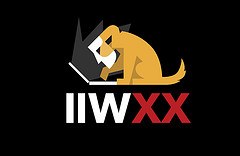A veteran VRooMer tells me a design fiction would be a fun challenge for VRM Day and IIW (which will run from April 6-9 at the Computer History Museum in Mountain View, CA).
tells me a design fiction would be a fun challenge for VRM Day and IIW (which will run from April 6-9 at the Computer History Museum in Mountain View, CA).
He describes one as “basically a way of peeking into the near future by demonstrating an imaginary product that doesn’t exist, but could. For example, instead of talking about a possible VRM product, one instead would create a marketing brochure, screen mockups or a fake video advertisement for this imaginary product as a way to help others understand where the world is headed and possibly even further the underlying technologies or driving concepts.”
Coincidentally, the subject of VRM Day (and a focus for the three days that will follow at IIW) is a maturity model framework that will provide every VRM developer the same single sheet (or set of them) on which to show where they stand in developing VRM capabilities into their company, product, code base or whatever else they’re working on. Work has already started on it, and those doing the work will present a first draft of it on VRM Day.
You know the old saying, “all singing from the same song sheet”? The VRM maturity model framework is it. Think of it as a musical score that is starting to be written, for an orchestra will come together. When we’re done with this round, we’ll at least know what the score describes, and give the players of different instruments enough of a framework so they know where they, and everybody else, fits.
By the end of IIW, it should be ready to do several things:
- Provide analysts with a single framework for understanding all VRM developers and development, and the coherencies among them.
- Give VRM developers a way to see how their work complements and/or competes with other VRM work that’s going on — and guide future developments.
- Give each developer a document to use for their own internal and external purposes.
- Give CRM, CE. CX and other vendor-side systems a clear picture of what pieces in the VRM development community will connect with their systems, and how, so buyer-side and seller-side systems can finally connect and grow together.
While we do this, it might also be fun to work out a design fiction as a summary document or video. What would the complete VRM solution (which will surely be a collection of them) look like? How would we present it as a single thing?
All of this is food for thinking and re-thinking. Suggestions invited.
